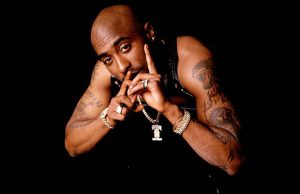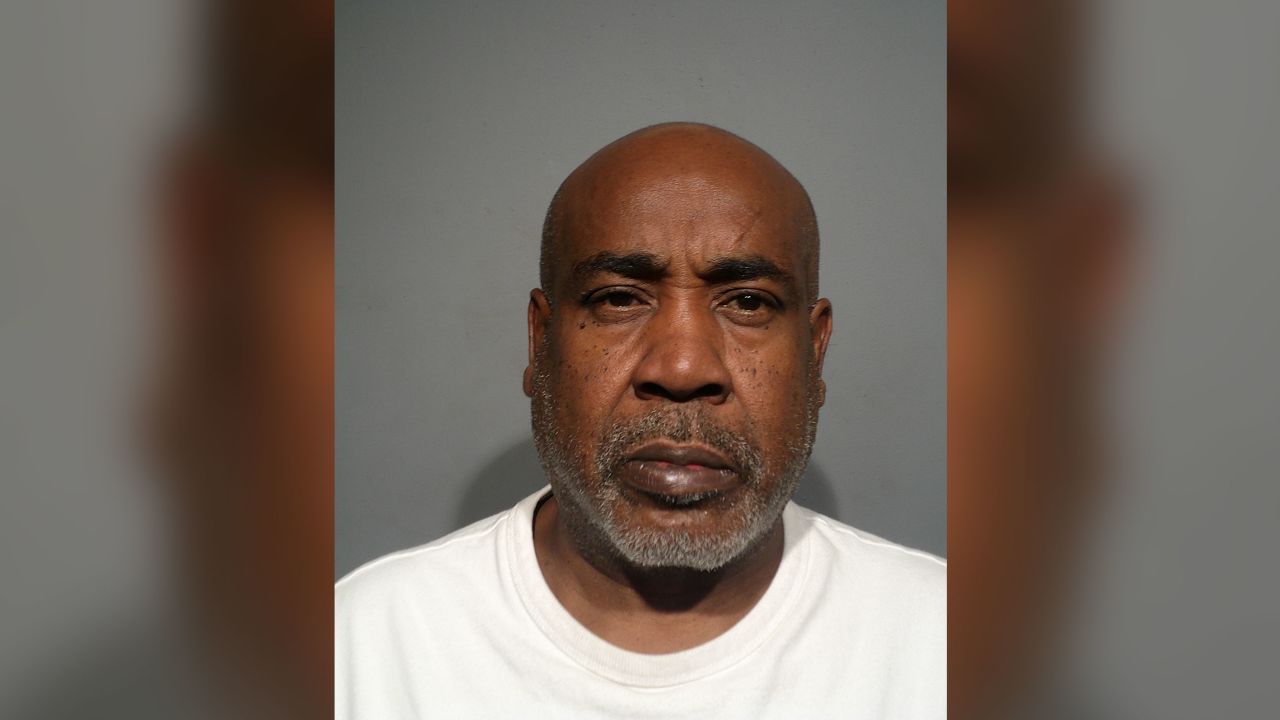

A grand jury has indicted Duane Keith “Keffe D” Davis on charges of murder with use of a deadly weapon in connection with the 1996 killing of rapper Tupac Shakur, Las Vegas authorities announced.
Davis, 60, was arrested Friday morning in Las Vegas, according to authorities. His wife’s Henderson home was searched in July as part of the ongoing investigation into the shooting.
Shakur was shot and killed while leaving a boxing match on the Las Vegas Strip. His untimely death – the rapper was just 25 – has been the subject of conspiracy theories and a decadeslong investigation.

2Pac died on September 13 1996
At a Friday news conference, authorities painted Davis as the ringmaster of a plot to kill Shakur as retaliation after an attack on his nephew. Davis has long placed himself at the scene of the crime, saying he was in the front seat of the white Cadillac that came up beside Shakur’s car when shots rang out from the back seat, killing the musician. The rapper was shot four times and died six days later.
“For 27 years, the family of Tupac Shakur has been waiting for justice,” said Las Vegas Metropolitan Police Department Sheriff Kevin McMahill at the news conference.
“The investigation started on the night of September 7th, 1996,” McMahill said. “It is far from over. It has taken countless hours, really decades, of work by the men and women of our homicide section to get to where we are today.”
Jason Johansson, the police department’s homicide lieutenant, said the murder was a “retaliatory” attack after a conflict between two gangs based in Compton, California. Shakur and Marion “Suge” Knight, the former CEO of Death Row Records, were affiliated with the Mob Piru gang in Compton, while Davis was affiliated with the Southside Compton Crips, according to Johansson.
Shakur was in Las Vegas to see Mike Tyson box at the MGM Grand Hotel. Members of the Southside Compton Crips, including Davis and his nephew Orlando Anderson, also attended the event.
“As both groups were leaving the fight, members of Death Row Records spotted Orlando Anderson near an elevator bank inside the MGM and at that time they began to kick and punch him near that elevator bank,” said Johansson, showing hotel surveillance footage of the fight. Shakur and Knight were visible among the men who attacked Anderson.
“Little did anyone know that it is this incident right here that would ultimately lead to the retaliatory shooting and death of Tupac Shakur,” he said.

Both groups left the hotel, with Shakur and his crew headed to a post-fight after-party at a local nightclub. When he found out about the attack on Anderson, Davis “began to devise a plan to obtain a firearm and retaliate against Suge Knight and Mr. Shakur,” according to Johansson.
After he acquired a gun from a “close associate,” Davis got into a white Cadillac along with Terrence Brown, Deandre Smith and Anderson.
“At some point in time, as they were in the white Cadillac, Mr. Davis took the gun that he had obtained and provided it to the passengers in the rear seat of the vehicle,” Johansson said. A copy of the indictment states Anderson and Smith were both in the back seat and does not specify which man pulled the trigger.
The group found the black BMW in which Shakur and Knight were riding, began shooting at them through the window, and immediately fled the area, authorities said.
“Duane Davis was the shot-caller for this group of individuals that committed this crime. He orchestrated the plan that was carried out to commit this crime,” said Johansson. All the other individuals associated with the crime are dead, he added, including Anderson, who denied his involvement with the murder to CNN before his death in a gang-related shooting in 1998.
Johansson said police have long known the outline of events that night, but lacked sufficient evidence to bring the case forward.
The decadeslong quest to officially solve the case was “reinvigorated” in 2018, according to Johansson. Davis’ own admissions regarding the crime were a crucial piece of the investigation, he said.
When police searched Davis’ wife’s home in July, they seized a copy of the memoir Davis authored detailing street gang life and the murder of Shakur. In the memoir, Davis describes himself as one of only two living witnesses to Shakur’s shooting, the other being Knight, who is now serving time in prison for manslaughter in an unrelated case.
“Going to keep it for the code of the streets,” Davis said when asked who of the four men in the car was responsible for pulling the trigger. “It just came from the back seat, bro.”
Davis had confessed to the crime to police in 2009, but the information was unable to be used, according to a former police detective who investigated the case.
“We sat him down back in 2009, and he confessed to his role in the murder along with other coconspirators,” Greg Kading told CNN’s Jake Tapper on Friday.
However, Davis “had a proffer agreement, so we couldn’t utilize that information that he was providing against him,” Kading said.
A proffer is an agreement in which a suspect agrees to provide potentially useful information in an investigation, but the statements made generally cannot be used as evidence against the suspect.
Johansson said officers knew the 2018 refocus on the case was “likely our last time to take a run at this case to successfully solve this case and bring forth a criminal charge.”
Tupac’s stepbrother, Mopreme Shakur, who is also a rapper, said news of Davis’ arrest is “bittersweet.”
“We have been through decades of pain. They have known about this guy, who been running his mouth, for years,” he said.
“So why now?” he said. “For us, this is not over. We want to know why, and if there were any accomplices.”
Shakur’s career was short but hugely influential and the musician has left an outsize legacy in music, style and culture.
Tupac Amaru Shakur was born on June 16, 1971, in Harlem, New York. He and his sister were raised by a single mother, former Black Panther member Afeni Shakur, until the trio moved to Baltimore, where Shakur enrolled at the Baltimore School for the Arts. The family soon moved again to Marin City, California. Despite moving around quite a bit in his youth, Shakur considered nearby Oakland his home.
“I give all my love to Oakland, if I’ma claim somewhere I’ma claim Oakland, even if I don’t live there,” Shakur said in a 1993 interview.
Knight, co-founder and then CEO of Death Row Records, visited Shakur while he was serving a prison sentence in New York in 1995 and offered to pay his bond on the condition he would sign on to his label. Shakur agreed and signed to Death Row Records, joining a roster of artists that included Snoop Dogg and Dr. Dre.
The rapper released 11 platinum albums: four during his five-year career and seven others released posthumously. His first album, “2Pacalypse Now” debuted in November 1991. He was also a poet and featured in films like “Poetic Justice” and “Above the Rim.”
He used his music to comment on social issues, with his introspective lyrics often visiting topics like racial inequality, poverty and gang violence.
His career was also distinguished by a high-profile rivalry with East Coast rapper Biggie Smalls. The hip hop legend, who had a similarly meteoric rise to fame, was shot and killed in Los Angeles at the age of 24, less than a year after Shakur’s death. His murder is still unsolved. –-CNN